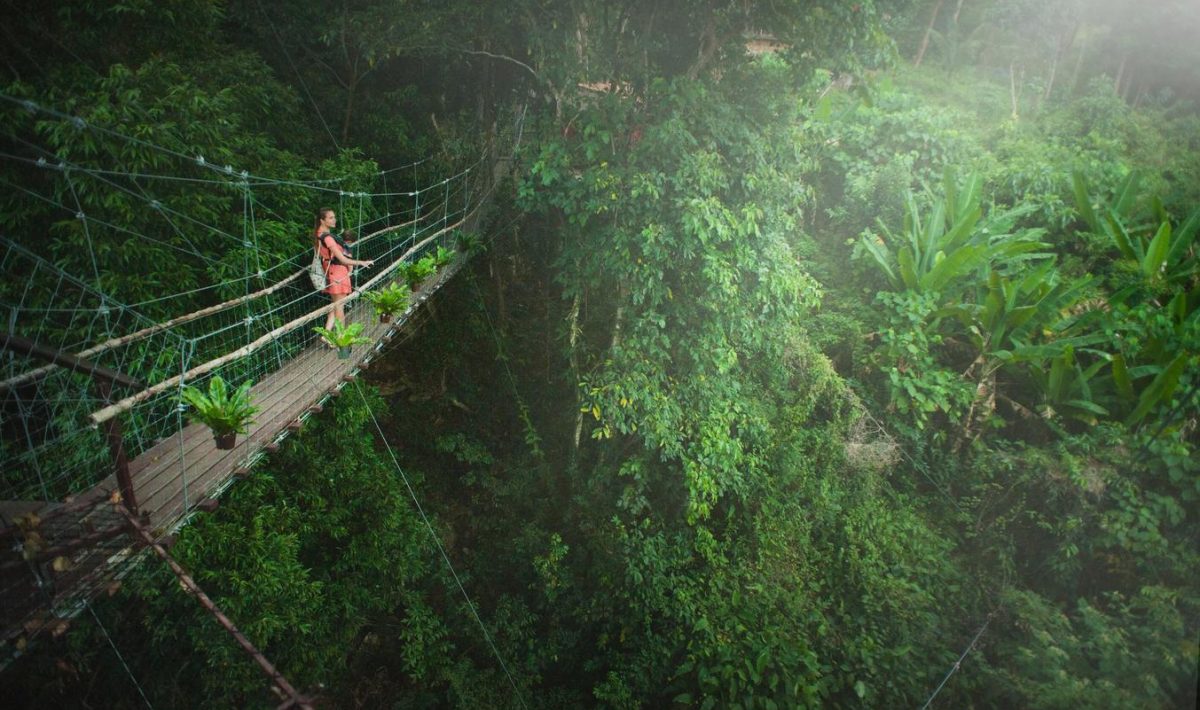So you finally decided to live more adventurously and take a risk? I agree with you — there is more to life than fancy hotels and visiting malls. One should, by all means, experience and see this world and all it has to offer. However, our planet graced us with astonishing beauty, but at the same time, there are a lot of dangers we should be aware of.
In case you’re one of those people who scream the moment they see a bee or a moth, perhaps backpacking through the jungle might not be the best option. If a mere itsy-bitsy spider can scare you out of your shoes, then a tarantula as large as your hand might be a shock. Unlike the spider in your house, which really just wants to be your roommate, Tarantula might not be as friendly.
Most importantly, though, you need to make sure that you don’t get lost when in the jungle. The best way to prevent this from happening is to study the many ways of navigation where there is no civilization. Before you embark on an adventure, it is crucial that you familiarize yourself with all the methods that could help you out of the forest. Some are hand-made, such as a map and compass, and others refer to Mother Nature for help. Whatever it may be, it can definitely save your life and get you to safety, so make sure you know how to, at least, use the compass first. Remember, navigation and proper gear are the crucial things every backpacker should have.
In most of the jungles and dense forests, GPS won’t be of much help as thick branches easily block the signal. All of this can easily confuse you and make it harder to find your way out. But our ancestors knew better, and they passed on us all the knowledge we might need in the wild. Here is some of the wisdom our elders left for us as heritage.
The More Resources, the Better
When you’re about to embark on a risky adventure such as backpacking through dense rainforest, it’s important not to rely on one or two survival methods. Bring all the gear you can think of — compass, maps, roadmap, topographic map, etc. All of this will help you determine which direction should you go in. Moreover, staring at your map for too long or relying on it exclusively is why so many people get lost. If you don’t pay attention to your already confusing surroundings, it’s easier to stray away.

Break Your Trip Into Smaller Ones
This is a psychological method that will help you create a whole by collecting pieces — like a puzzle. If you do so, your trip will stop being scary and exhausting because you will always have a goal. If you separate your jungle trip into small segments, each one stopping by a river or a recognizable mark, you probably won’t get lost. Your whole trip will be based on moving from one self-made checkpoint to another. It is a proven method, so feel free to try it — it just might work for you.
Use the Terrain Into Your Advantage
When you break your trip into smaller bits, there is no guarantee that the terrain through which you hike will be easy. This is where that theory of how the fastest path is not necessarily the best one comes in. Moving from a checkpoint to a checkpoint is a smart method to use, but if you take advantage of nature’s signals, you have good chances of survival as well.
What you need to do is follow some of nature’s guidelines that could lead you to civilization. You should look out for things such as roads, bridges, rivers, and streams.
Get to Know Your Route Beforehand
It can often happen that some unexpected events you didn’t see coming ruin your plan. For example, you were thinking of crossing that ancient bridge in the middle of the jungle. However, once you got there, you had no idea that it crumbled. This completely destroyed not only your plans but routes as well. It is vital that you have a few alternative routes through the jungle. You wouldn’t want to just cry by the bridge with all that humidity. Try to be resourceful.
How to Use a Map

Believe it or not, the majority of people have no idea how to actually use and read a map. We might have learned about it in elementary school during geography classes, but that’s where most of us left it. If you would put an average, educated person into a forest and told them to use a map, the chances are that they would have no idea how. So here are some tips and reminders on how to take advantage of a map when lost.
- North, South, East, and West are the four directions of the map
- One inch on a map equals one mile in the real world
- Using this method, you can easily determine the approximate distance between locations
- Longitude and latitude are the lines that you see over your map. They can tell the exact location of any point on the planet
- Make sure you’re familiar with what colors on maps represent. Dark green represents dense areas, which can be useful in a jungle.
Do Not Rely on Right and Left
When you’re in a rain forest or a jungle, right and left become very subjective terms. What’s right for you probably won’t be right for someone else 2.5 miles away from where you are. Green areas can often feel like a maze, and a lot of people have gone mad because of this. More often than not, most of those who get lost in the jungle are circling around instead of going straight. This can exhaust and confuse you, not to mention, irritate you — basically, all the things you don’t need or want when you’re lost and panicking.
This is why you should always use a compass and cardinal points; they will minimize the chance of you getting lost.
Follow the Sun and the Moon

This is something even the cavemen lived by, and luckily the Sun still rises on East and sets on West, even millennia later. The trails of the Sun and the Moon are something you can always rely on (except for in Australia, it is slightly different). Additionally, you can find some bare land where there are no trees, put a stick into the ground, and watch the shadow move slowly. This will help you determine all four sides of the world.
Additionally, if it is night, you can always pay attention to where Polaris is. Because of its position, it is one star on the Earth’s sky that never changes its position. It still represents North, and it always has. So if you see the brightest shining star on the sky, you can be 100% certain that North is down that road.
Exploring Can Be Fun
Now that you have found out new methods to find your way out from a jungle, feel free to set on this new adventure. Make sure you watch where you step and put your hands on. There are a lot of fleeing snakes on the ground, and they bite out of self-defense. Also, tree branches often have sleeping spiders and caterpillars on them, and in the jungle, they can be very poisonous. Other than that, there is not much you should worry about. You’ll be one of the rare people who get to brag about how they’ve conquered the jungle.


